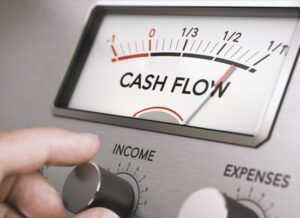Undoubtedly, your dealership is aware of the challenges it faces on the front-end of the business. Competition in the marketplace is stiff. That is why the focus is increasingly being shifted to the back-end.
Ask this question: Is your dealership doing everything it can to maximize profitability in your service department? For many dealers, the answer is “no.”
Significantly, you can begin to rely on your service department to pick up some of the slack. In other words, it can absorb some of the overhead from the new and used vehicle departments.
How can you stimulate profits in this area? Essentially, it means increasing fixed operation gross, decreasing total dealership expense, or possibly a combination of the two.
Here is a quick checklist of 10 suggestions:
1. Monitor the performance (productivity and efficiency) of technicians.
2. Keep an eye on the dollar sales of your parts counter personnel.
3. Track the sales of service advisers. Make sure they have received proper training.
4. Check on the number of one-item repair orders written monthly by service advisers.
5. Review your effective labor rate in relation to retail rate.
6. If you don’t already do so, begin to offer full parts and service on Saturdays.
7. Call customers to confirm or remind them of service appointments.
8. Make follow-up calls to those customers who haven’t made their appointments.
9. Follow up on customers who obtained repair estimates.
10. Make sure departments communicate with each other. Foster relationships between the parts, service, and sales departments to increase profitability. For example, let’s say a customer visiting the service department decides the estimate for repairing an old car is too high. Consider rewarding the employee who refers the customer to the sales department if a new vehicle is purchased.
Bottom line: There is plenty of room for improvement at most dealerships. There may be computer programs that can help you monitor the performance of your service department. By examining specific categories, you may find areas that are ripe for growth. Your accountant can perform a review of your operations and help take steps to maximize profitability on the back end.
Detect, Then Collect, Warranty Receivables
Unfortunately, many auto dealerships aren’t as profitable as they could be because they don’t collect all the money owed to them.
Example: Does your dealership collect all warranty receivables owed by the factory? Some dealerships allow warranty receivables to “gather dust” or they give up on them instead of proactively collecting.
Most warranty receivables should be collected within 30 days of the invoice date — or sooner.
Problems often occur when all or part of the warranty is rejected by the factory. The dealership’s responsible party (for example, a warranty clerk) should immediately determine the reason for the rejected claim. If necessary, corrected information can be re-submitted. This might require discussions with service technicians in the shop. Prompt attention can help resolve these matters to your satisfaction.
To ensure these receivables are being timely collected, review the monthly warranty schedule in your computer system. Target those over the 30-day mark for review and explore the possibilities for correcting the situation.
If your dealership has many outstanding warranty receivables, it generally indicates an on-going problem. You may have to review the procedures in place and revise them to facilitate faster collection.
Finally, ask your office manager to perform a double-check on the dealership receivables. Follow up with the service manager and warranty clerk to avoid problems. Your due diligence in this area, as well as close attention to detail, can reap rewards.
Please contact Keith Laudenberger via our online contact form for more information.
Councilor, Buchanan & Mitchell (CBM) is a professional services firm delivering tax, accounting and business advisory expertise throughout the Mid-Atlantic region from offices in Bethesda, MD and Washington, DC.




